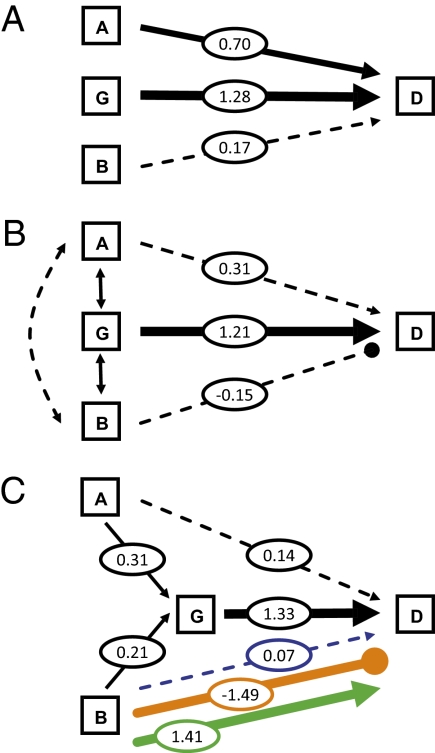Fig. 1.
Models of the direct and indirect effects of biological factors on extinction risk in Cenozoic bivalves depending on whether covariation between factors is accounted. A, abundance; B, body size; G, geographic range size; D, species duration. Values are model coefficients. Solid lines denote significant effects at α = 0.05. Dashed lines are hypothesized but nonsignificant effects. Positive and negative effects are indicated by arrows and filled circles, respectively. Clade-independent coefficient estimates are black, and clade-specific coefficient estimates are colored blue (Carditoidea), orange (Pectinoidea), and green (Veneroidea). (A) When biological factors are assumed to be independent in their effects on extinction risk, geographic range is the strongest predictor, with abundance also contributing. (B) When covariation is taken into account, geographic range seems to be the only factor that contributes directly to extinction risk. (C) A multigroup model that includes both direct and indirect effects has the greatest support and identifies weak indirect effects of abundance and body size on extinction risk through the influence on geographic range size and opposing direct effects of body size on extinction risk among clades.

